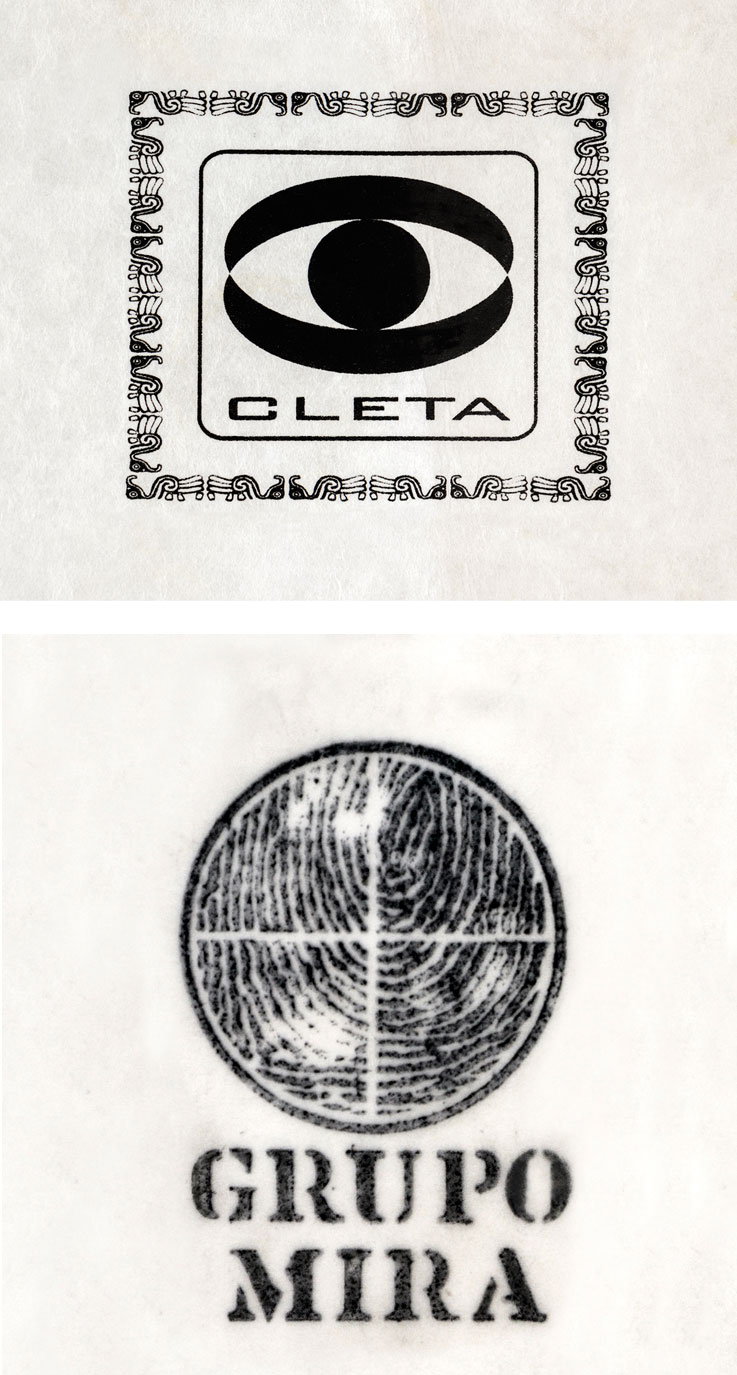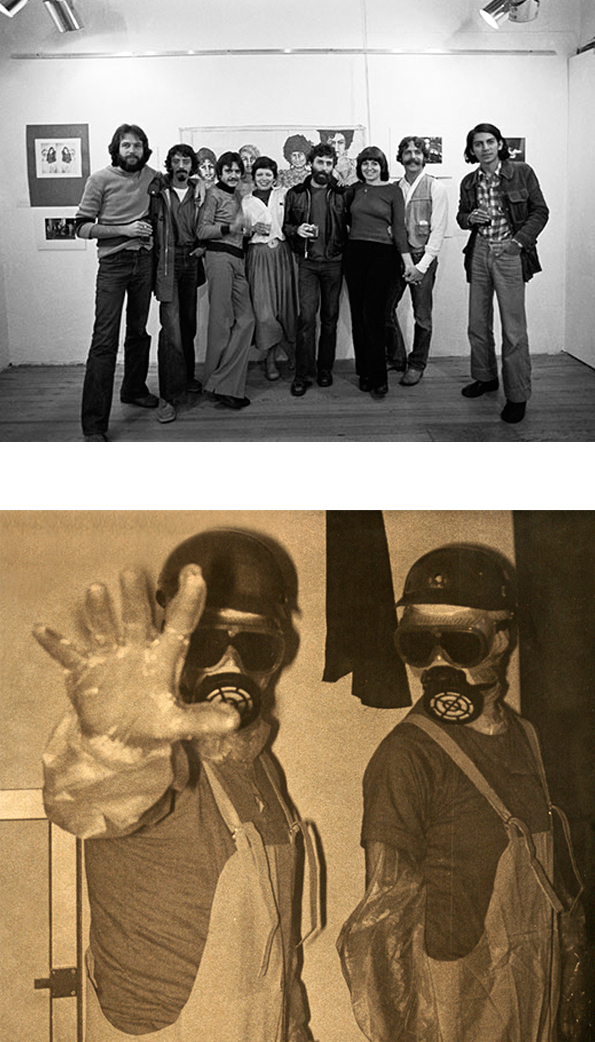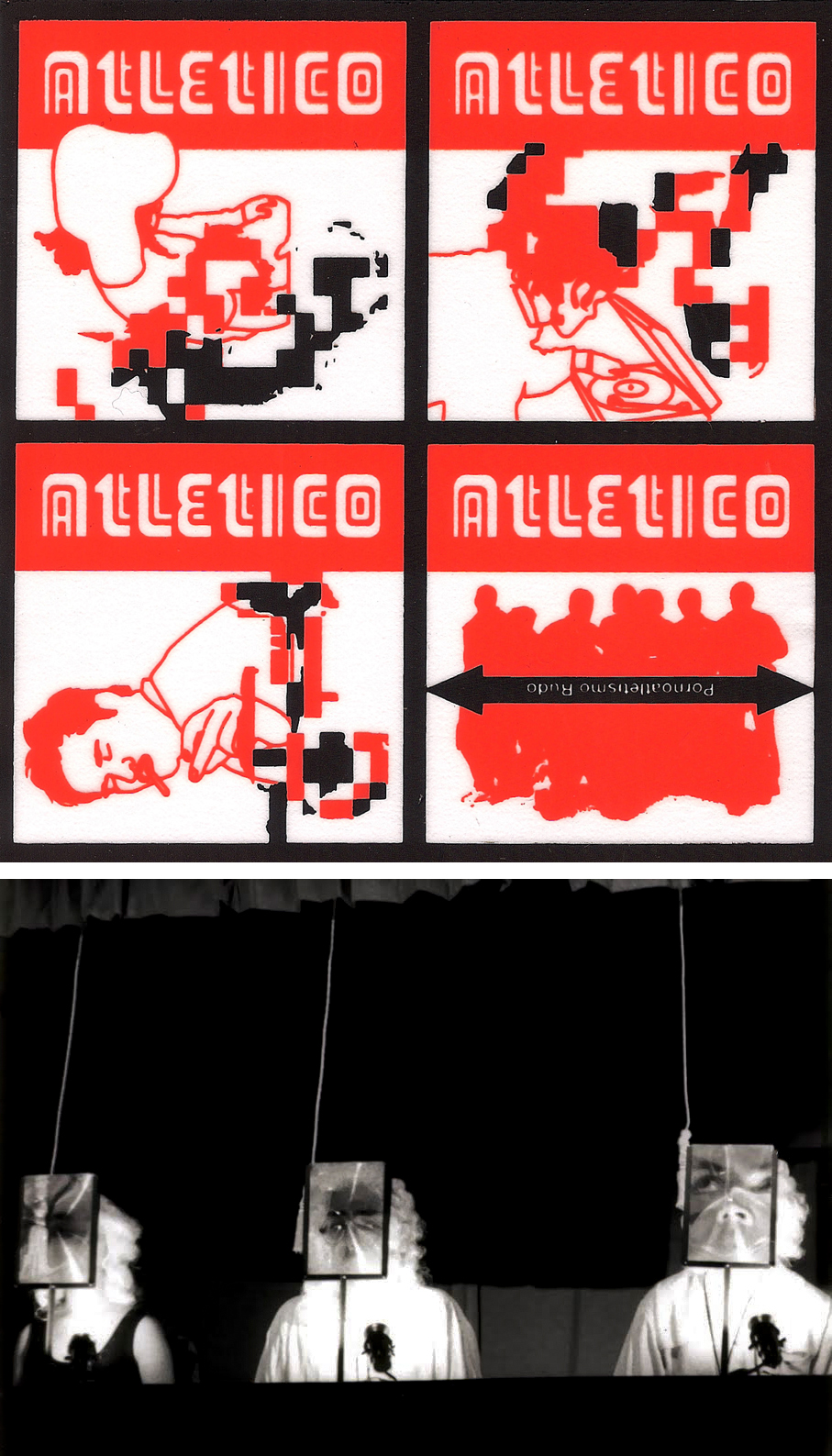Collectivities
Fond No Grupo
Active between 1977 and 1983, No Grupo belongs to the moment characterized by group practice versus individual practice. Maris Bustamante, Rubén Valencia, Melquiades Herrera, Alfredo Núñez, Hersúa, Susana Sierra, Sandra Llano, Katya Mandoki, Andrea di Castro and Roberto Realh de León were all involved, but it was short-lived. Only four members remained until the end: Bustamante, Núñez, Herrera and Valencia. The group, in dialogue with the Peruvian theorist Juan Acha, is characterized by the use of the body, non-object-based art, an intelligent humor, criticism of the artistic system and its interest in popular aesthetics. The archive includes sketches, logs, posters, works and documents related to the 10th Paris Biennial, Ambient Presence of Gunther Gerzso, Attack on the Prodigal Son and Agenda Colombia 83 , among others.

Fond CLETA
In 1973, the Free Center for Theater and Art Experimentation (CLETA) was created. Influenced by the political and social movements of the 1970s, its artistic, political and social activities (mainly connected to the dramatic arts) were aimed at creating actions of a revolutionary character. They occupied the Casa del Lago and the El Eco building to carry out cultural activities. The archive reflects different periods of the group and is composed of photographs, posters, audio cassettes and VHS, posters, newsletters, newspaper cuttings, graphic and print, as well as materials on unions, peasant, indigenous and university movements, and the collection of the El Machete newspaper, among others.
Fond Grupo MIRA
Comprising the artists Arnulfo Aquino, Melecio Galván, Rebeca Hidalgo and Jorge Perezvega, among others, MIRA (1977-1982) was a politically active collective. Its members had worked together since 1965 as students at the National School of Visual Arts (ENAP) and some participated in the student movement of 1968 creating banners, posters and flyers. MIRA used public art strategies, such as the mural and low-cost printing, and became involved with different social movements, from Chicano groups to the labor movement. They created works that emulate comic strips, such as Graphic Communiqué number 1 on the problems of Mexico City. The collection is made up of graphic works, sketches, bibliographic and newspaper material, photographs, flyers and invitations.

Fond Grupo Proceso Pentágono
Grupo Proceso Pentágono (GPP) was founded by Víctor Muñoz, Carlos Fink, José Antonio Hernández Amezcua and Felipe Ehrenberg after they participated in the 10th Biennial of Young Art of Paris in 1978. Subsequently, they were joined by Miguel Ehrenberg, Lourdes Grobet, Carlos Aguirre, Rowena Morales and Rafael Doniz. They were part of the Mexican Front of Cultural Workers’ Groups and one of the most active in Mexico during the 1970s and early 80s, marked by their rebellious attitude and criticism of the dirty war and abuse of power in Latin American nations. The archive comprises materials related to the works and projects carried out: photographs, documentation, catalogs, magazines and press materials.
Fond Sindicato del Terror / Eric del Castillo
Active between 1987 and 1989, the Sindicato del Terror was an initiative of Roberto Escobar, who was joined by Eric del Castillo, Carlos Salom, Lucero Milchorena, Carmen Arellano and Carlos Jaurena. They are part of a generation of visual artists who during the 1980s promoted the action art scene in Mexico. Interested in the aesthetics of gore, they pursued an intensive activity that can be reviewed in the photographs, logs, video cassettes, sketches, invitations, photocopies, labels, masks, posters and works by Escobar himself (collages, ceramics, object art) contained in the documentary collection, which also includes some documents from the Escombros de la Ruptura and Sociedad Mexicana Protectora del Espectador de Performance initiatives.

Fond Atlético
Active between 1998 and 2003, Atlético’s members were the visual artists Balam Bartolomé, Dulce Chacón, Bernardo Hernández, Antar Kuri, Heráclito López, Juan Carlos Matus, Nicolás Pradilla, Adriana Riquer, Diego Teo and Rogelio Vázquez, all graduates of the UNAM’s National School of Visual Arts (ENAP). The group took an ironic approach to the formality of artistic production, with parties and socializing among its members in order to dilute the notion of individual authorship in the production of artworks. It is characterized by a variety of technical and formal solutions, as well as attention to music and design. The archive includes artistic work and records (screenprints, drawing, photography and video), reviews, invitations and other printed materials about their exhibitions.
Fond 19 Concreto
19 Concreto (1990-2012) emerged at the National School of Painting, Sculpture and Engraving “La Esmeralda,” and comprised Fernando de Alba, Roberto de la Torre, Víctor Martínez, Ulises Mora, Lorena Orozco, Alejandro Sánchez, Luis Barbosa, José Gómez, Ángel Flores, Ana Ruiz and Carmen Ramírez. Its name refers to the earthquake of September 19, 1985 and to an industrial, urban and anonymous material. The collective employed irony and took an interest in space and architecture. They worked on performance, object art, installation and electronic media. The archive offers an account of their practices through sketches of installations, plans for performances, photographs to record actions, invitations, audiovisual material, negatives, catalogs, newspaper cuttings and correspondence.


